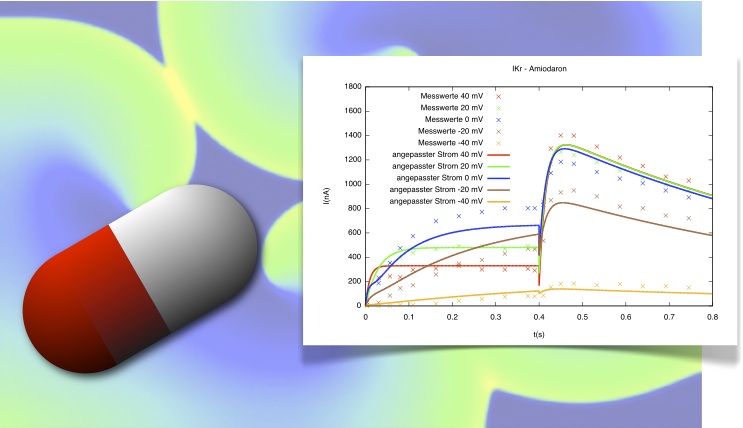Modeling the Impact of Dronedarone on Human Atrial Electrophysiology in Healthy and Electrically Remodeled Tissue
- Forschungsthema:Herzmodellierung, Simulation
- Typ:Studienarbeit
- Betreuung:
- Bearbeitung:
-
Atrial fibrillation (AF) is the most common cardiac arrhythmia affecting approximately 1% of the population. In the course of chronic AF (cAF), electrical remodeling modifies the properties of the affected atrial tissue.
 Several anti-arrhythmic agents, which are used in treatment of AF, exist. However, the efficacy of these drugs still can be improved. Furthermore, some of them are associated with a wide range of adverse side effects. Therefore, the mechanisms of action of these agents have to be better understood and still can be optimized.
Several anti-arrhythmic agents, which are used in treatment of AF, exist. However, the efficacy of these drugs still can be improved. Furthermore, some of them are associated with a wide range of adverse side effects. Therefore, the mechanisms of action of these agents have to be better understood and still can be optimized.Dronedarone is an anti-arrhythmic agent used in the treatment of AF by maintaining sinus rhythm. It is a derivative of amiodarone and has been developed to reduce the side effects as e.g. thyroid toxicity of its precursor compound.
The aim of this work is to integrate the effects of dronedarone into a model of atrial electrophysiology. In this way, the mechanism of action, i.e. the anti-arrhythmic effects of this agent should be better understood. In previous work, the effects of amiodarone were already integrated into an atrial cell model. Finally, a comparison of both agents and their impact on healthy and electrically remodeled tissue shall be carried out.

